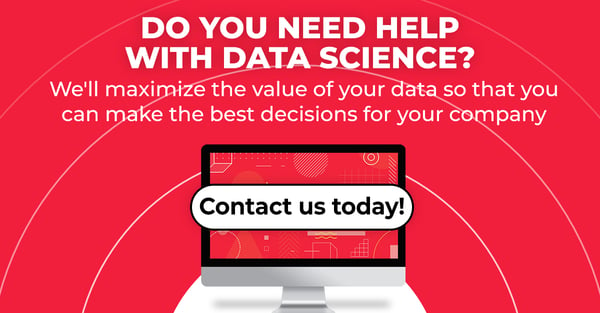Aggregate data refers to the compilation of information from multiple sources into a summary form, typically for statistical analysis. This data is often anonymized, meaning individual-level details are removed to protect privacy while still allowing for meaningful insights. By aggregating data, businesses can analyze trends, patterns, and correlations that might not be visible in isolated datasets.
In the realm of digital marketing, aggregate data is a crucial concept that can significantly influence strategies and outcomes. Understanding what is, its uses, and real-world examples can empower marketers and brands to make informed decisions.
Key Characteristics of Aggregate Data
Aggregating data allows for a more general understanding than individual data points, and looks at patterns, trends, and statistics that don’t emerge until data points are grouped together. This grouping allows for the analysis of data at a higher level, making it easier to identify overarching trends and insights.
In digital marketing, aggregate data can come from various sources such as website analytics, social media platforms, customer relationship management (CRM) systems, and marketing automation tools. This data can include metrics like website traffic, conversion rates, email open rates, social media engagement, and more.
The four key characteristics of aggregate data are:
- Summarized Information: Aggregate data combines individual data points into a collective format.
- Anonymity: Individual identities and specifics are not discernible.
- Statistical Use: Primarily used for statistical analysis and to derive trends.
- Large Scale: Often involves large volumes of data from diverse sources.
While aggregate data is extremely valuable, it's essential to handle it responsibly. Data privacy concerns are paramount, and businesses must ensure they comply with regulations like GDPR and CCPA. Anonymizing data is a crucial step in protecting individual privacy while still gaining actionable insights.
Uses of Aggregate Data
Aggregate data plays a pivotal role in various aspects of digital marketing. Here are some of the primary uses.
Market Analysis
By analyzing aggregate data, businesses can identify market trends and consumer behavior patterns. This enables marketers to tailor their strategies to meet the evolving demands of their target audience.
Performance Measurement and Optimization
Aggregate data is used to track the performance of digital marketing campaigns and strategies. By analyzing aggregated metrics such as click-through rates, conversion rates, and bounce rates, you can evaluate the effectiveness of your efforts and make data-driven decisions to optimize campaigns, allocate resources more effectively, and achieve better results.
Predictive Analytics
By analyzing aggregate data trends over time, marketers can conduct predictive analysis to forecast future outcomes and trends. This allows for proactive and strategic planning and decision-making based on data-backed insights.
Improving User Experience
Analyzing aggregate data from user interactions can help businesses enhance their websites and applications. By understanding common user behaviors, companies can improve navigation, content, and overall user experience.
Examples of Aggregate Data in Digital Marketing
Google Analytics
Google Analytics is a prime example of aggregate data in action. It collects data from website visits and compiles it into comprehensive reports, which can then be used to understand user behavior, traffic sources, and conversion rates. For instance, by looking at aggregated data on page visits, a brand can determine which pages are most popular and optimize their content accordingly.
Social Media Insights
Platforms like Facebook, TikTok, Instagram, and others provide extremely useful aggregate data on user engagement. This includes metrics such as likes, shares, comments, and much more. By examining this data, you can gauge the success of your social media campaigns and refine your strategies. For example, if a particular type of post consistently receives high engagement, you might decide to produce more content in that style.
Email Marketing Campaigns
Email marketing platforms like Mailchimp and others aggregate data from email campaigns, providing insights into open rates, click-through rates, and subscriber behavior. By analyzing this data, brands can determine the best times to send emails, the most effective subject lines, and the content that resonates most with their audience.
Ecommerce Sales Data
Ecommerce businesses often use aggregate data to analyze sales performance. By examining aggregated sales data, you can identify top-selling products, peak shopping times, and customer purchasing patterns, as well as drop-out points or bottlenecks that need improving. This information can inform inventory decisions, promotional strategies, and overall business planning.
In conclusion, aggregate data is not just about numbers—it's about the stories and trends that emerge when these numbers and data points are brought together. By leveraging aggregate data effectively, you can get valuable insights, drive meaningful engagement, and stay ahead in today's competitive marketing landscape.
Data Scientist en Cyberclick. PhD en Astrofísica por la Universitat de Barcelona con más de diez años de experiencia en investigación mediante el análisis e interpretación de datos. En 2019 redirige su carrera profesional hacia el mundo del Data Science cursando el Postgrado en Data Science y Big Data de la UB, así como participando en el programa Science To Data Science (S2DS) en Londres. Actualmente forma parte del equipo de Data Science y SEM de Cyberclick.
Data Scientist at Cyberclick. PhD in Astrophysics from the University of Barcelona with more than ten years of research experience through data analysis and interpretation. In 2019 he redirected his professional career to the world of Data Science by graduating in Data Science and Big Data from the UB, as well as participating in the Science To Data Science (S2DS) program in London. He is currently part of Cyberclick's Data Science and SEM team.




_%20Advantages%20for%20Marketing.jpg)


Leave your comment and join the conversation